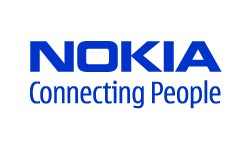
Proof-of-concept trials evaluate role of cellular technology in enabling safe, cost-efficient, low-latency car connectivity
World’s first use of LTE broadcast for vehicle-to-network-to-vehicle connectivity and network Real-Time Kinematic for location awareness and accurate navigation
Application of Nokia LTE radio technology with Nokia AirFrame data center-based MEC solution and evolved Multimedia Broadcast Multicast service hotspot solution
Prepares car industry for future 5G-based automated vehicle use
Nokia and KDDI have successfully demonstrated the use of LTE in Japan to deliver cost-efficient, low-latency connectivity for vehicles. The trials are the first in the world to use LTE broadcast, implementing the evolved Multimedia Broadcast Multicast Service standard in two connected car applications, and demonstrating the potential of cellular technology to enable fully automated driving in the future.
Vehicle-to-Everything (V2X) technology is designed to connect vehicles to each other, to communications network infrastructure, and to roadside sensors, including connectivity to traffic lights, radar and other functions. For the proof-of-concept trials in Japan, Nokia and KDDI focused on vehicle to network usecase and used non-integrated systems in cars interacting with sensors via the Nokia Multi-access Edge Computing (MEC) platform, which enables significantly reduced network latency.
The Nokia evolved Multimedia Broadcast Multicast service (eMBMS) hotspot solution, allows data to be sent once to many users simultaneously. Used in the trial it allowed real-time information to be shared with multiple vehicles to cost-effectively enable awareness and road safety. The companies compared the efficiency of using LTE broadcast to the one-to-one communication enabled by LTE unicast, in two connected car applications:
Vehicle-to-network-to-vehicle (V2N2V) – in which cars maintained constant contact with the MEC system, sending real-time location, direction and speed data to roadside sensors. In an emergency situation, the driver can alert the application, with information distributed to other vehicles using eMBMS.
Network Real-Time Kinematic (network RTK) -trial of LTE to enhance fully automated in-vehicle navigation. It showed how eMBMS could more cost-efficiently use existing geo-location systems to communicate to many vehicles in real-time and ensure accurate navigation.
The trials were conducted by Nokia and KDDI at a rural location on the Japanese island of Hokkaido.
Source: Nokia

